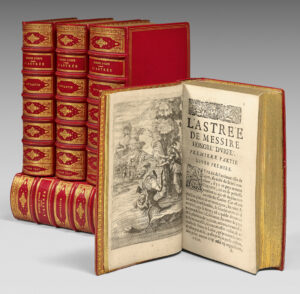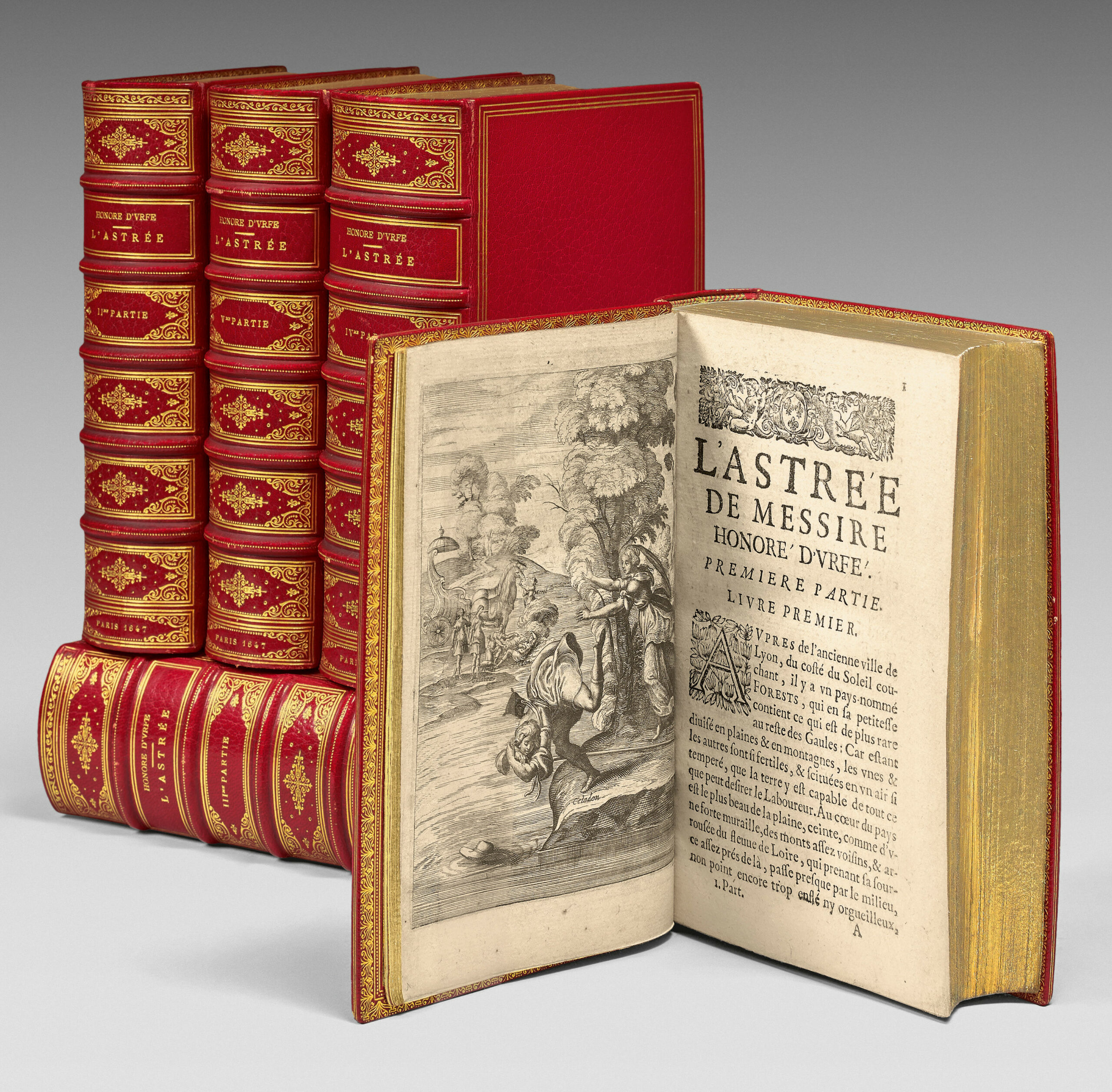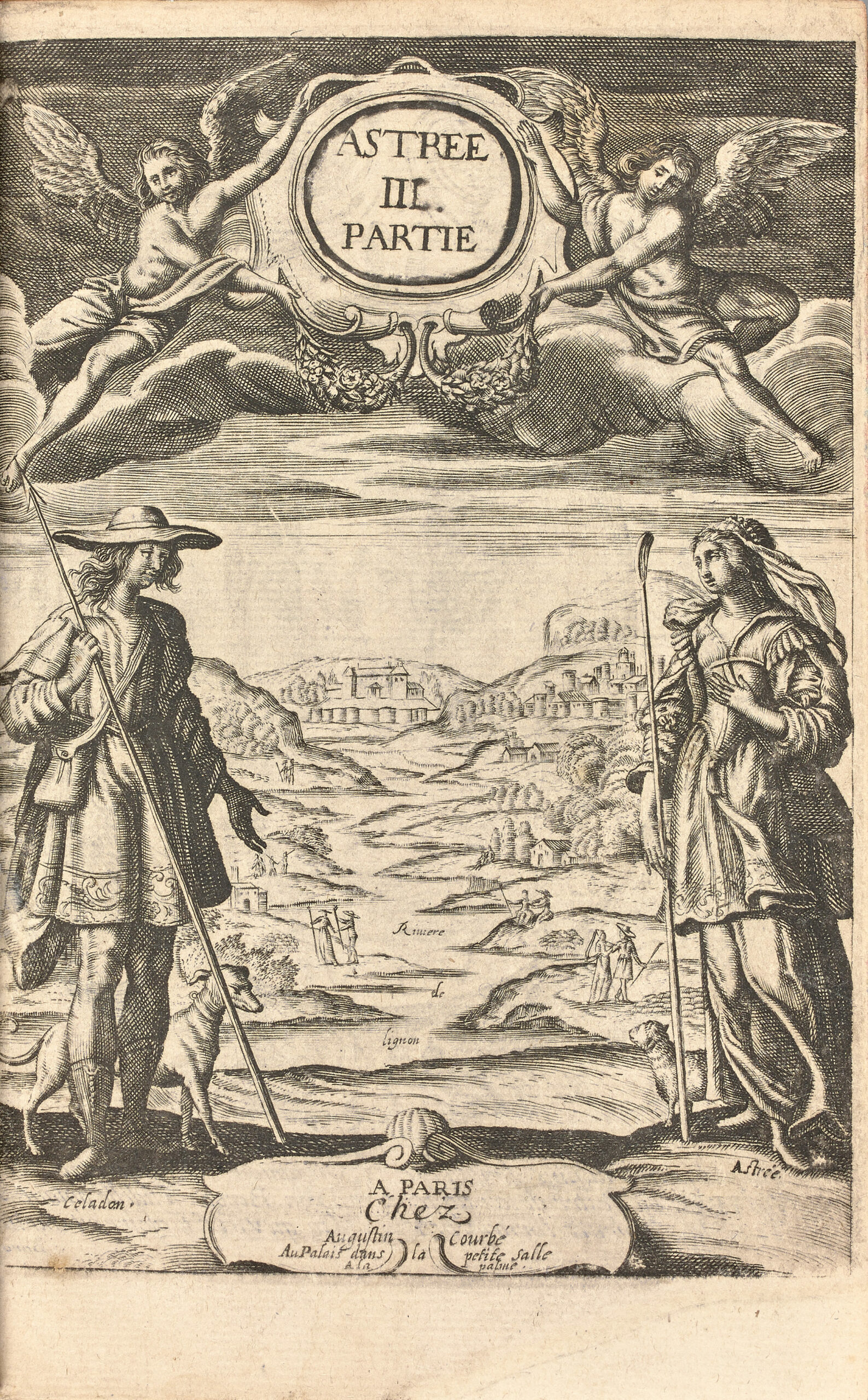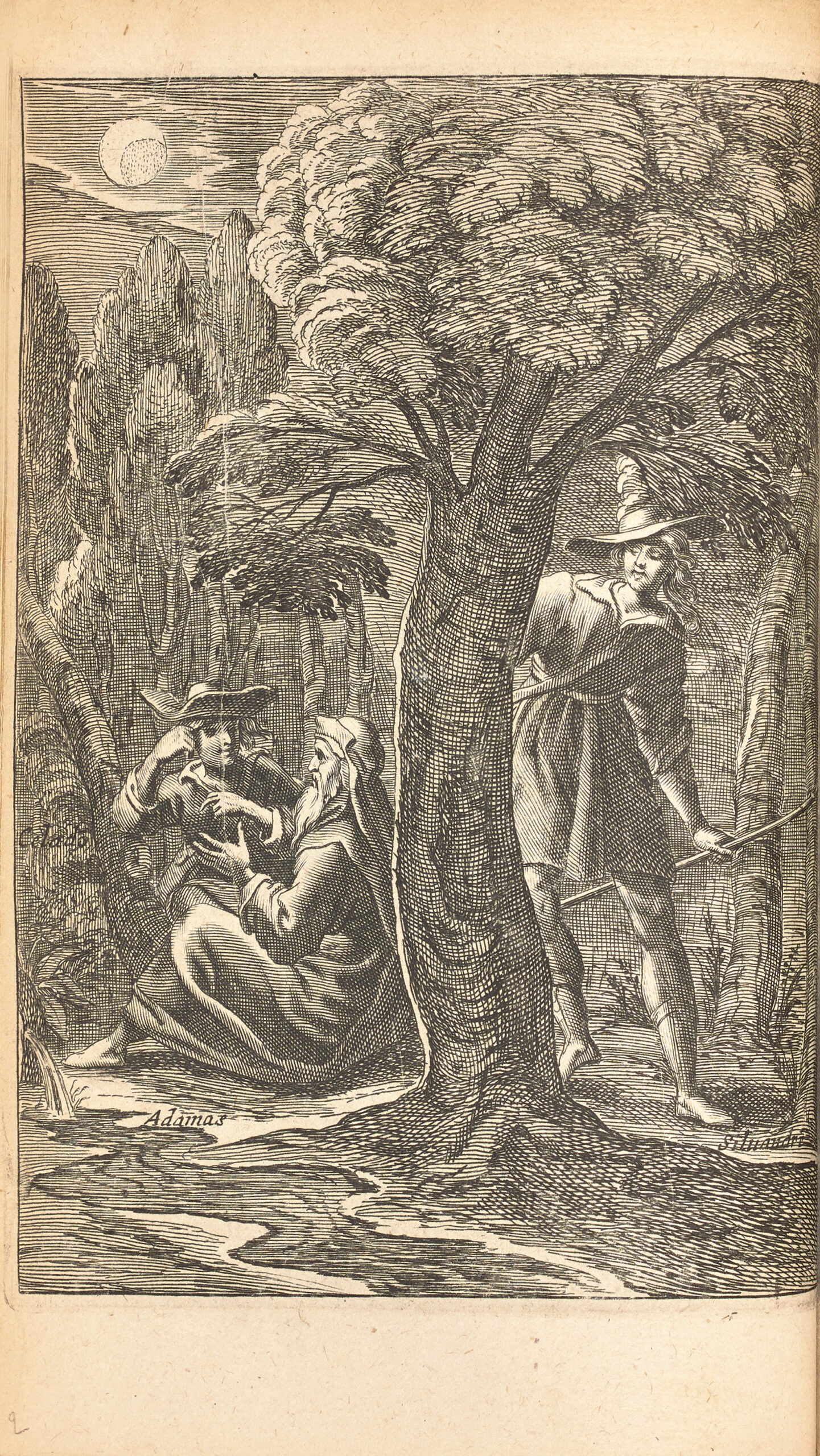Paris, Augustin Courbé, 1647.
5 volumes 8vo of I/ (16) pp. including 1 engraved frontispiece and 2 portraits, 855 pp. including 12 engravings, (5); II/ (16) pp. including 1 engraved frontispiece, 2 portraits, 984 pp. including 12 engravings; III/ (23) pp. including 1 frontispiece and 2 portraits, 1221 pp. including 12 engravings, (3) pp. ; IV/ (16) pp. including 1 frontispiece, 2 portraits, 1386 pp. including 12 engravings, (4) pp. ; V/ (32) pp. including 1 engraved frontispiece and 3 portraits, 953 pp. including 12 engravings, (3) pp.
Red morocco, triple gilt fillet around the covers, very decorated ribbed spines, inner gilt border, gilt over marbled edges. Chambolle-Duru.
180 x 113 mm.
First definitive edition and last complete edition of l’Astrée, the famous successful novel which modelled the thoughts and manners of the precious Salons of the 17th century, illustrated by a great painter of the Fontainebleau school, Daniel Rabel.
Tchemerzine, V, 945.
L’Astrée, whose success was immense and influence enduring (the shepherd Céladon in love with the shepherdess Astrée is evoked by Racine for his Andromaque), is difficult to find in homogeneous copies; this one is all from the same bookseller. (Tchemerzine V, 945). One leaf restored in volume 2.
This is in fact the first edition that one can find, more and more rarely, in a uniform binding with all the volumes at the right date.
The first collective edition of l’Astree was published in 1631. It was reworked until 1647, when this last collective and definitive edition was published, considered to be better printed and more complete.
“It is more correct than that of 1631”. (Brunet, V, 1015).
This edition, complete, corrected and definitive, contains the dedication to Henri IV, a reader of L’Astrée since before its publication, inserted in the editions subsequent to the first of 1610 (volume II), the preface to Louis XIII which followed (volume III), and the two dedications by Balthazar Baro, the continuator of the novel in 1625 after Urfé’s death: the first to the queen mother Marie de Médicis (volume IV) and the second to Ambroise Spinola, commander of the Spanish armies in Holland (volume V).
A great pastoral and psychological novel, in 5 books and over 5,000 pages, l’Astree had a profound effect on the sensibilities of the 17th century.
“Honore d’Urfé transposed and idealized his love for Diana, adding to it the transposition of real anecdotes (such as the love affairs of Henri IV and the beautiful Gabrielle).”
The success of the work was immense: it was snapped up in the courts of Europe and in the city;
Boileau, La Fontaine and Molière read it when they were young, and Jean-Jacques Rousseau never hid the influence that Honoré d’Urfé’s great pastoral and precious novel had on him.
L’Astrée, the birthplace of poets.
A code of perfect love whose laws it summarizes in 12 articles, L’Astrée is the first major work of sentimental fiction.
“In L’Astrée, dedicated to Henri IV and enjoyed by the Vert Galant, the awakening of amorous knowledge in landscapes of tall grass, forests and streams was accompanied, for the most precocious and gifted young readers of the 17th century, by a discovery of their own language and its resources of betrayal and loyalty. D’Urfé’s Arcadie forézienne could be transposed to Champagne, Brittany and even the Île-de-France region, and it encouraged the translation of Virgil’s Bucolics, Ovid’s Metamorphoses and the Latin elegies – in short, of the ancient imagination studied at the same time at school – into an intimate French experience” (Marc Fumaroli).
“The novel was a huge success and had a profound influence on customs and literature. Boileau appreciated it, and La Fontaine made it one of his favourite reads”.
The remarkable illustration by Daniel Rabel, engraved by Michel Lasne, comprises 5 frontispieces, 11 portraits and 60 beautiful full-page engravings.
“There is some grace and charm in the small genre paintings… It seems only natural that the best engravings in the book should be those in which the world of backstreets parades around Louis XIII-style alcoves… Rabel was the official draughtsman of the Ballets du Roi… He must have preferred to reproduce what was under his eyes. So we are entitled to wonder whether everything in this architectural setting is fiction…” (Jeanne Duportal).
Beautiful wide-margined copy from the libraries ‘Charlotte Hoive 1737’ and André Cade with ex-libris.




